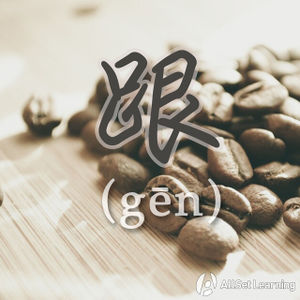Difference between revisions of "Basic comparisons with "yiyang""
m |
|||
| Line 18: | Line 18: | ||
<div class="liju"> | <div class="liju"> | ||
| − | * 我 <em>像</em> 你 <em>一样</em>。 | + | * 我 <em>像</em> 你 <em>一样</em>。<span class="trans">I am like you.</span> |
| − | * 啤酒 <em>和</em> 葡萄酒 <em>一样</em> 吗? | + | * 啤酒 <em>和</em> 葡萄酒 <em>一样</em> 吗?<span class="trans">Are beer and wine the same?</span> |
| − | * 美国 <em>跟</em> 英国 不 太 <em>一样</em>。 | + | * 美国 <em>跟</em> 英国 不 太 <em>一样</em>。<span class="trans">America and England are not too similar.</span> |
</div> | </div> | ||
| Line 40: | Line 40: | ||
<div class="liju"> | <div class="liju"> | ||
| − | * 你 <em>跟</em> 我 <em>一样</em> 高。 | + | * 你 <em>跟</em> 我 <em>一样</em> 高。<span class="trans">You and me are the same height.</span> |
| − | * 他们 <em>和</em> 我们 <em>一样</em> 酷。 | + | * 他们 <em>和</em> 我们 <em>一样</em> 酷。<span class="trans">They and us are equally cool.</span> |
| − | * 小狗 <em>像</em> 小猫 <em>一样</em> 可爱。 | + | * 小狗 <em>像</em> 小猫 <em>一样</em> 可爱。<span class="trans">Puppies and kittens are equally cute.</span> |
</div> | </div> | ||
Revision as of 08:16, 28 January 2013
-
Level
-
Similar to
-
Used for
-
Keywords
As well as with 比 and 没有, there is a third way to make basic comparisons: with 一样 (yīyàng).
Rather than expressing that two things differ regarding a particular quality, 一样 is used to express that two things are the same in some way.
Contents
Basic Structure
The simple structure is used for stating that two things are equal:
Subject + 跟 / 和 / 像+ Noun + 一样
Examples
- 我 像 你 一样。I am like you.
- 啤酒 和 葡萄酒 一样 吗?Are beer and wine the same?
- 美国 跟 英国 不 太 一样。America and England are not too similar.
Structure with Adjective
To add an adjective into the mix, just place it after 一样:
Noun 1 + 跟 / 和 / 像 + Noun 2 + 一样 + Adjective
This describes Noun 1 as being as adjective as Noun 2.
Examples
- 你 跟 我 一样 高。You and me are the same height.
- 他们 和 我们 一样 酷。They and us are equally cool.
- 小狗 像 小猫 一样 可爱。Puppies and kittens are equally cute.



